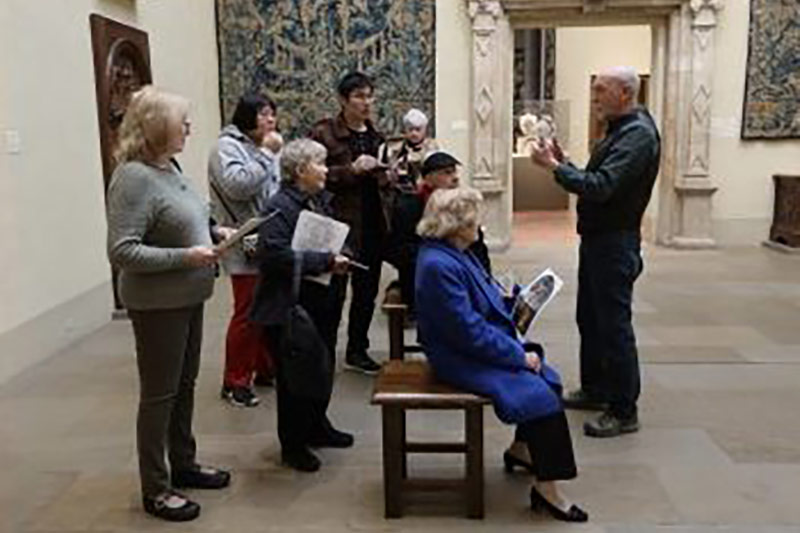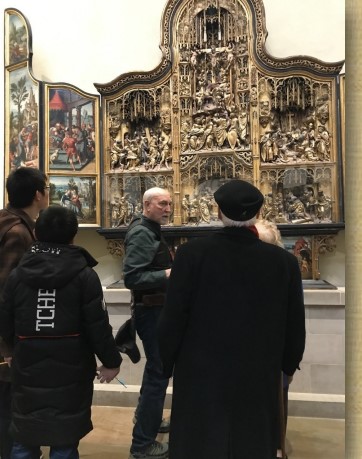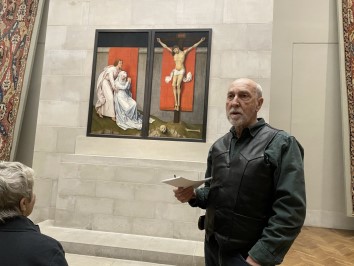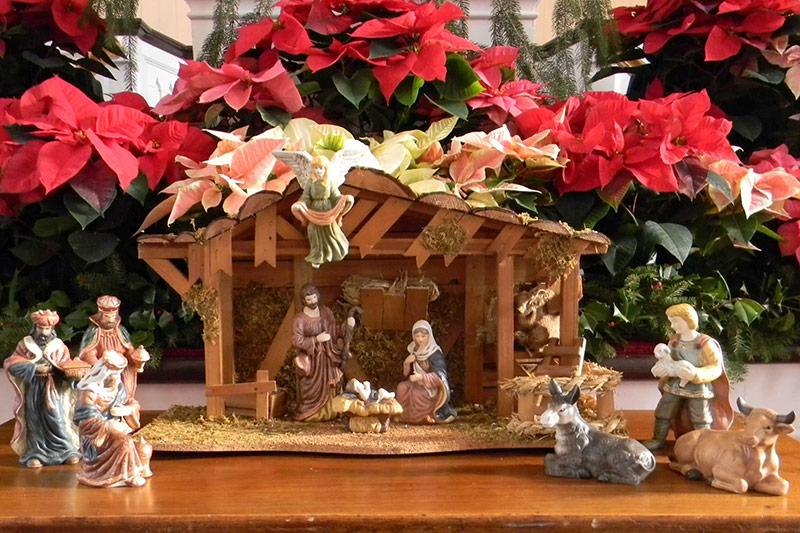Christmas Sunday, December 22, we will have our regular schedule: 9:00am: Zoom service10:30am: In-Person Worship…

Written by Kenneth Campbell
A small, but intensely interested, band of BCGV members journeyed to the Philadelphia Museum of Art to view the permanent collection of Medieval and Renaissance artists’ renditions of the Crucifixion on Sunday, March 12. Gary Kerschner, an art history teacher for more than 40 years at Conestoga High School and also a relative of tour organizer Roberta Winters, brought each of more than a dozen artworks to life with his erudite assessments of their history and meaning.
Renaissance artists saw the Crucifixion as the final act of a series of events leading to the death of Jesus on Calvary’s cross, using triptychs, altar-pieces, murals, and other art forms to convey the barbarity and agony of Christ’s ordeal.

Opening the tour was an incredibly detailed Flemish altarpiece from the early 1500s depicting scenes from Jesus’ life and His Passion during his final days. At the time of its construction, wood carving was prized more highly than painting, hence the altarpiece features a multitude of gilded figurines flanked by paintings, which were less prized by the Flemish at that time. Irene Campbell and Yili and Emma Zhang were photographed contemplating the details of this complex masterpiece.

In another photograph, our guide Gary Kerschner elaborates on this 1460-era two-panel painting by Netherlands artist Rogier van der Weyden, an artist renowned for his ability to convey emotion, depicting the Virgin Mother Mary and St. John the Evangelist mourning the death of the Crucified Christ. Note how Mary’s gown spills from the left to the right panel. The crimson backdrop highlights the barrenness of the dull walls; Roberta Winters listens at left. Other tour participants were Tom Winters, Evie Ryder, Joy Brown, Peter Zhang, and Ken Campbell.



